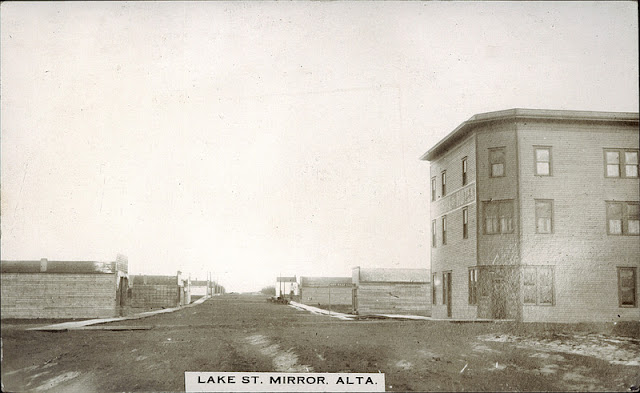Faulkner Mills: Prosperity in 18th Century Massachusetts
Ammi Ruhamah, Ammi and Francis Faulkner
I
already wrote about the life of my first cousin eight-times-removed Ammi
Ruhamah Faulkner in the “Same Name” post, but I am going to return to him and
his sons Ammi and Francis to discuss the concept of prosperity.
Yes, I realize
my relationship to Ammi Ruhamah, Ammi and his brother Francis is ridiculously
distant, but I’ve found that some of my dives down the rabbit holes of the more
distant relationships uncover the most interesting stories. These stories are
the motivating force driving my genealogical research. Stories bring the dry
facts of history alive for me and my children, and that’s why I love building
my family tree. I don’t want to just collect names—I want to discover lives.
My family tree
is populated mostly by regular people who worked hard to build a decent, secure
life. They merely wanted to support their families and maybe put a little money
away for their old age; they never expected to become wealthy. However, men like Ammi Ruhamah Faulkner and his descendants achieved slightly
better than the middle class life the majority of my ancestors sought. They achieved prosperity by taking a chance and building their own businesses.
Ammi Ruhamah’s grandfather
Edmund Faulkner had been one of the first residents of Andover, Massachusetts,
and had acquired a large amount of land in the process. The land was divided
among his sons, who divided it among their sons, and even after the divisions,
there was still enough land for each grandson to farm and support their families.
Edmund’s
grandson Ammi Ruhamah ended up selling his Andover land. He relocated to the
Acton/Billerica, Massachusetts area, eventually renting and then buying a sawmill
and a “fulling mill”, which is a mill that can weave woolen fabric. This was
quite a risk; Ammi Ruhamah had been a farmer previously, and had to sell his
farmland to buy the mill property. However, his gamble paid off. The businesses
thrived, and grew to include a grist mill which ground grain for flour.
Two of his four
sons, Ammi and Francis, remained in Acton and operated these businesses after
his death. Ammi and Francis also built a potash facility—potash was useful as
fertilizer and for soap-making, glass-making and bleaching fabric. It was
produced by burning wood and leaves, using water to leach the ashes, and then
evaporating the water to leave the potash. The family seemed to have been
attuned to what their community needed: fabric for clothing, wood for
construction, flour for food, and potash for a variety of functions. They also
built on their property’s strength, the stream that ran through it and powered
all the mills and provided the water for the potash leaching.
 |
| Map of South Acton in 1886, with Faulkner House and Mill Site on High Street circled. |
With all these
businesses, the brothers were quite prosperous. While they shared a house—Ammi
and his wife Obedience had the east end, and Francis, his wife Rebecca, and
their ten or eleven children had the rest of the house—the house was still the
largest in the community, and so well-built and well-maintained that it still
stands today and is owned by a historical society and is open for tours. The
Faulkner Mills remained in operation for many years, and the Faulkner family
lived in what is now known as The Faulkner House, for over 200 years.
 |
| Faulkner House in Acton on High Street--mill was across street |
Francis Faulkner’s
son, also named Francis, moved the fulling mill operation to the nearby town of
Billerica in 1811, and that business, despite several fires that forced rebuilding,
remained in operation through World War I.
 |
Faulkner Mill in Billerica around 1900
|
The Faulkner Mill building in Billerica has been completely restored and now houses small businesses and the Middlesex Canal Museum.
I see the experiences of Ammi Ruhamah Faulkner and his sons Francis and Ammi as examples of how to achieve prosperity: it takes risk, hard work, and an understanding of how to best utilize your assets, both physical and intellectual, to create products that people need and want.
Sources:
https://www.actonhistoricalsociety.org/blog/sarah-skinner-getting-used-to-darkness
http://faulknermill.com/
http://www.billericahistory.org/faulknermills.html
Pinterest shot by Nicole Marie Tartaglia
 |
| Faulkner Mill in Billerica today |
I see the experiences of Ammi Ruhamah Faulkner and his sons Francis and Ammi as examples of how to achieve prosperity: it takes risk, hard work, and an understanding of how to best utilize your assets, both physical and intellectual, to create products that people need and want.
Sources:
https://www.actonhistoricalsociety.org/blog/sarah-skinner-getting-used-to-darkness
http://faulknermill.com/
http://www.billericahistory.org/faulknermills.html
Pinterest shot by Nicole Marie Tartaglia





























